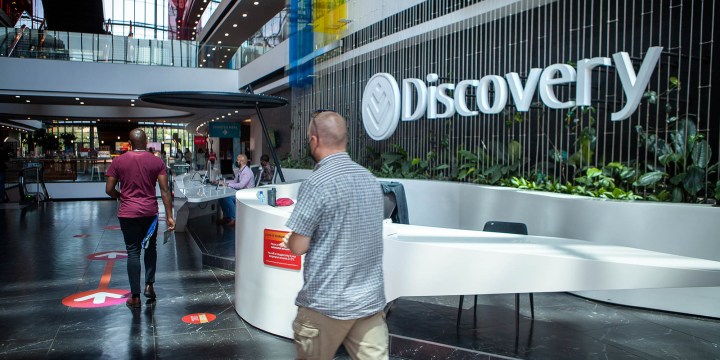MEDICAL SCHEME COSTS
Discovery Health announces deferred contribution increase for third year running

Over the past few years, a new trend has emerged in medical schemes – deferred increases designed to lift financial pressure on members battling to make ends meet.
Keeping in line with the new trend, the country’s largest medical scheme, Discovery Health, will only introduce a contribution increase in April next year, rather than January, giving members almost R1.9-billion in financial relief.
The scheme, which has more than 2.8 million members, implemented a deferred increase of 7.9% from October to December this year. Trustees say if this is extrapolated over the full 12 months of 2022, it works out to an annual increase of just 1.98%.
The precise quantum of the 2023 increase is unknown at this stage; Discovery says it will announce the exact contribution increases towards the end of February next year to “ensure careful alignment with medical inflation”.
Ryan Noach, chief executive of Discovery Health, says both the Consumer Price Index (CPI) and healthcare utilisation outlook currently remain volatile.
“It’s important that the contribution increase accurately reflects underlying price and utilisation changes for 2023. The eventual increase will be in line with medical inflation, which is typically 3% to 4% above CPI, though members will experience a real annual increase of between CPI and CPI + 2%, considering the deferral.
“As always, DHMS aims to accurately balance its long-term sustainability with short-term affordability for its members,” he says.
Industry experts say the days of the deferred increase model are numbered once you factor in the abatement in the severity of Covid cases, increased vaccination numbers and increasing medical scheme usage.
The Council for Medical Schemes (CMS) has recommended that medical aid scheme contribution increases are capped at 5.7% for 2023. Medical schemes in a “strong financial position” can consider increases below the recommendation, but the proposed increase is based on the forecasted level of CPI for 2023 provided by the SA Reserve Bank.
The current increasing inflation trend saw CPI come in at 7.4% in June, its highest rate since May 2009 when CPI was 8%. As the level of CPI is outside the target range set by the Reserve Bank, adjustments to the repo rate have been made. In its July 2022 statement, the Monetary Policy Committee of the Reserve Bank forecast shows CPI levelling out at 7%, with the 2022 forecast revised to 6.5% from 5.9% previously.
Each year, medical scheme trustees consider the rate at which the scheme can afford to increase benefits by and the level at which medical service providers are going to increase their fees by in 2023.
Paresh Prema, health branch head of technical and actuarial consulting solutions at Alexforbes, says the recommendation from the CMS is intended to give medical schemes a starting point in their negotiations with service providers such as hospitals and doctors each year.
The medical scheme considers the level of increases that are affordable for its members, while providers consider increases in the cost of providing its services and includes items such as the cost of staffing, equipment and rental.
Visit Daily Maverick’s home page for more news, analysis and investigations
“When looking at the final contribution increase of a scheme for 2023, trustees should consider the effect of inflation as well as the impact of ageing and the changing disease burden on the scheme, and cost increases in equipment and medicines, and affordability for members,” Prema says.
Most medical schemes increase contributions in January as this coincides with the cycle of benefit changes. However, 2020 and 2021 saw a sharp decrease in the usage of medical services as many members shied away from elective procedures, which are not life-threatening, because they were either fearful of getting Covid or trying to keep costs down.
This meant that schemes were able to accumulate reserves beyond the 25% required by the Medical Schemes Act.
“This, coupled with the low inflationary environment, gave schemes the opportunity to delay contribution increases. One of the challenges that will be faced by schemes applying these deferred increases is how to maintain the relevance of contributions to inflation in the next year without passing increases to members shortly after implementing increases of the current year,” Prema warns.
Damian McHugh, chief marketing officer at Momentum Health Solutions, says the scheme’s contribution increase was 6% deferred until September this year and then it became 3%.
“That deferred increase cost the scheme more than R200-million because the scheme is essentially using the reserves to give members financial breathing space by subsidising the premiums,” he says.
He adds that part of the challenge is if schemes defer contribution increases and have high claims, then the scheme may not be collecting enough contributions and risks running at a loss.
“If you do that, you have to catch up in subsequent years. Which means you might push through a low increase now, but if you don’t have sufficient reserves, you may have to push through a double-digit increase in the years ahead,” McHugh said.
In a nutshell, the deferred increase model is only sustainable if a scheme has sufficient surplus financial reserves to manage it.
Noach says Discovery Health’s reserves strengthened relative to regulated solvency requirements because of the significant decline in non-Covid healthcare claims recorded during the pandemic and into 2022.
“The scheme’s excess solvency has been used to the benefit of members, with R6.8-billion achieved in contribution savings during 2020 and 2021 through the deferred increases. This also achieved effective annual contribution increases that were 50 basis points below the market over these two years,” he says.
Jeremy Yatt, principal officer of Fedhealth, says the scheme has 40% in reserves, which is higher than the 38% that the trustees would be comfortable with.
“However, we can’t simply decide to have a lower-than-necessary contribution increase, because each year, what you get in contributions should cover your claims. If you drop the increase, the scheme will run at a deficit. The following year, your surplus reserves are lower, and you will have to put through a higher increase,” he says. DM



















Comments - Please login in order to comment.